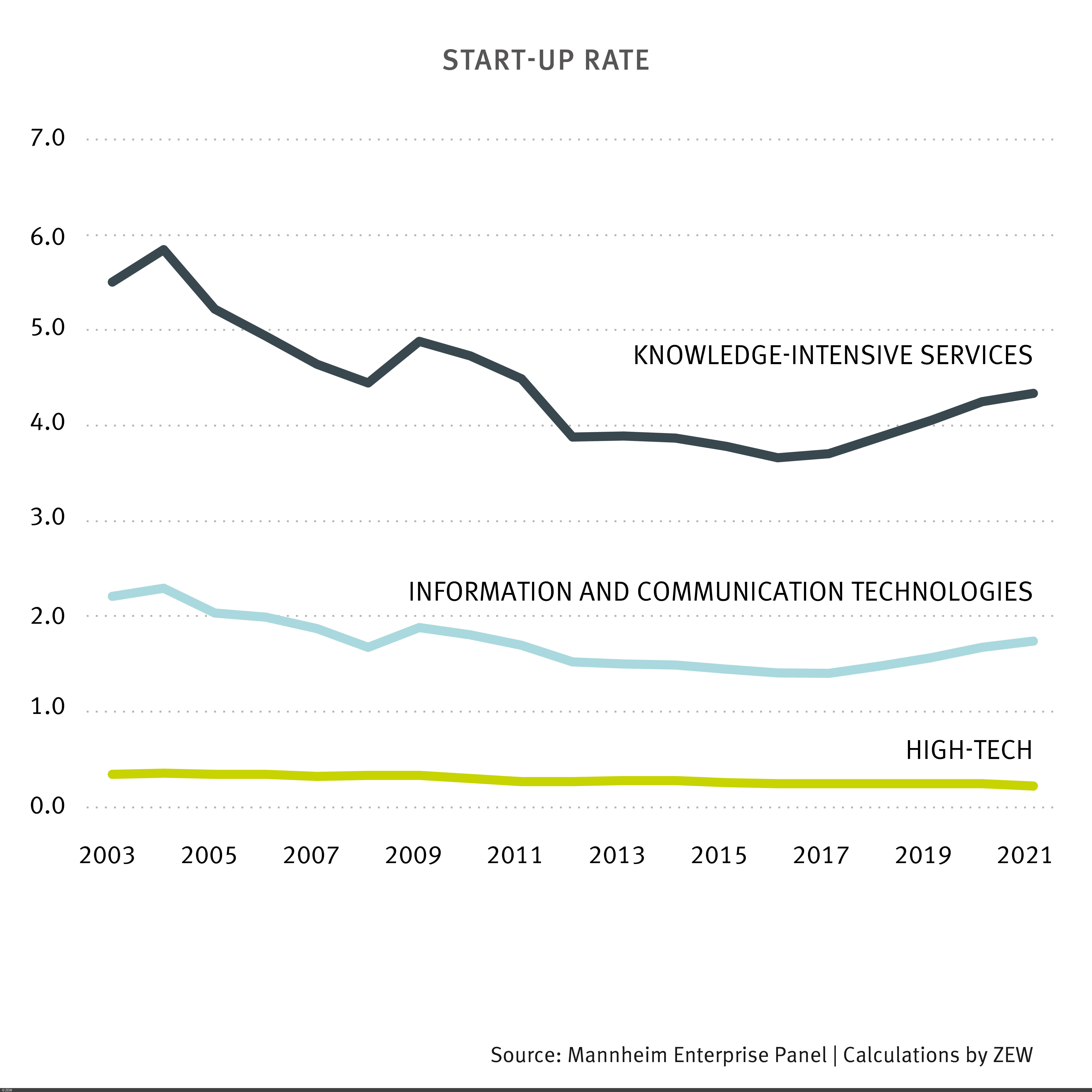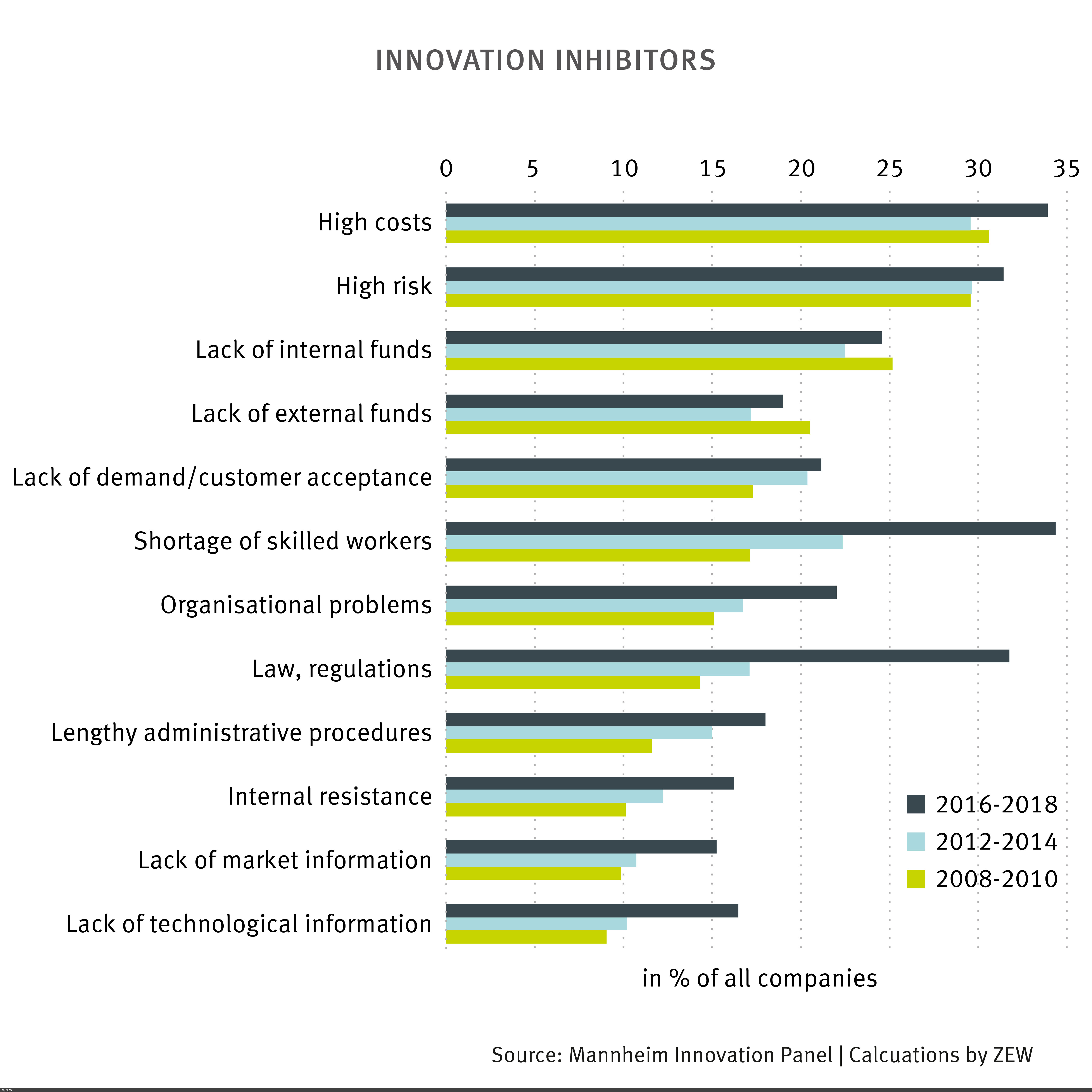Country of Innovation – Is the German Model Still on Track?
OpinionBy Hanna Hottenrott and ZEW President Achim Wambach
Germany is characterised by innovative medium-sized companies that are often global market leaders. Are we well-equipped for the transformation? Taking stock.
Germany’s innovation model has been remarkably successful over the past 150 years, evident in numerous sectors from chemicals to automobiles. German SMEs, in particular, are often world market leaders with their specialised products. Yet, amidst multiple crises and a less favourable business environment, a crucial question looms – can Germany sustain its innovative edge? And if so, how?
Innovation spending, especially by companies with over 250 employees, has risen. However, the percentage of innovative companies has steadily declined, not only among mid-sized players but across the board.
Moreover, climate change and transformation require not just radical innovations but also swiftness and adaptability. The German innovation model, rooted in thoroughness and cautious progress, seems ill-equipped to meet these demands.
On the flip side, young companies – being more likely to produce market novelties – are not only more innovative, they are also quicker in introducing them to the market. It is therefore important to ensure that they are able to innovate without unnecessary obstacles. Multiple crises in recent years have hit small and young enterprises hard, as they struggle with planning uncertainties, complex regulations, rising costs, and staff shortages.
Nevertheless, crises and transformation also present opportunities. The good news is that after years of stagnation entrepreneurship in Germany is gaining momentum again, especially in knowledge-intensive industries. This raises hopes that these start-ups will contribute to a German innovation model 2.0, characterised by both solidity and more radical innovations.
Financing difficulties are a major factor inhibiting innovation
Furthermore, initiatives to improve so-called innovation ecosystems are starting to have an impact. Business incubation centres, tax incentives for venture capitalists, regional networking initiatives, and financial support for business start-ups lower barriers and enable investments. However, rising interest rates may also have a dampening effect here.
Corporate surveys spotlight financing difficulties as a major barrier to innovation. While the perceived risk of innovation and technology has hardly changed in recent years, there has been a noticeable uptick in the perceived complexity of markets and technology. Internal resistance within companies, as well as lengthy administrative procedures and regulations, are increasingly playing a role in hampering innovation. After the shortage of skilled workers, regulatory obstacles are now among the most serious innovation inhibitors.
Bureaucracy and the regulatory burden are one of the biggest obstacles to innovation
So, how do we fortify Germany as an innovation hub for transformation? There is no one-size-fits-all solution; innovation efforts hinge on numerous factors. One key aspect involves the handling of new science-based technologies, particularly by intensifying cooperation and knowledge exchange between science and businesses. Innovation demands qualified and creative minds – addressing staff shortages through increased immigration of skilled workers, heightened investment in education and training, reliable childcare, and flexible employment opportunities in old-age would be an important step. Bureaucracy and regulatory challenges have become significant roadblocks to innovation, which is why it is necessary to simplify planning and approval procedures, not only in the energy sector. Innovations are needed in all sectors of the economy.
This opinion article first appeared as a guest article in Handelsblatt [Print Edition]




